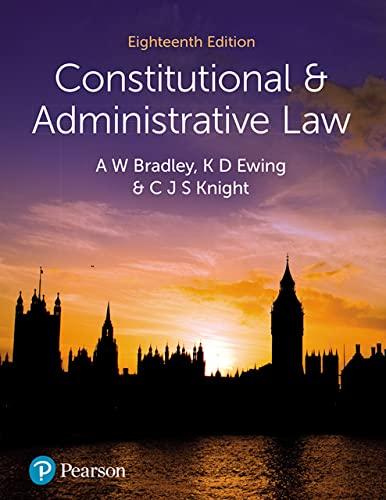Question
construct a full legal analysis using the IRAC format based on the fact pattern and issues below. Vic Victim sold a house to Dan Defendant
construct a full legal analysis using the IRAC format based on the fact pattern and issues below.
Vic Victim sold a house to Dan Defendant for $15,000. As part of the sale, Victim agreed to provide Defendant with $5,000 in materials for the house. To make this transaction easy, Victim and Defendant agreed that Victim would add Defendant as an authorized user on Victim's Hardware Store credit card. Defendant would then go to Hardware Store and purchase the materials and provide Victim with a receipt. Defendant never provided Victim with a receipt for materials, but Victim noticed on his next credit card bill that a purchase had been made at Hardware Store for $10,000. The purchase included miscellaneous items such as food, toys, gift cards to restaurants, and tools. Victim confronted Defendant and asked for repayment or for return of the items purchased. Defendant refused. Victim called police and reported the issue.
You work for a county prosecutor's office in the State of Missouri. The local police officer in charge of Defendant's case sent over a charge for receipt of stolen property. Your boss wants to know whether you think Defendant is guilty of receiving stolen property.
The following materials have been provided*:
Section 570.030.1 RSMo
State v. Garcia, 587 S.W.3d 688 (Mo. App. W.D. 2019)
Please use the outline below
I. Issue: Whether Dan Defendant is guilty of receiving stolen property under Missouri law.
II. Rule(s):
A. Section 570.030.1 RSMo: - Defines the offense of receiving stolen property. - Stipulates that a person commits this offense if they receive, retain, or dispose of stolen property, knowing that it has been stolen, or believing that it has been stolen, with the intent to deprive the rightful owner of it.
B. State v. Garcia, 587 S.W.3d 688 (Mo. App. W.D. 2019): - Provides precedent regarding the elements of the offense of receiving stolen property. - Offers guidance on the interpretation of the knowledge and intent requirements.
III. Analysis:
A. Receipt of Stolen Property: 1. Victim's Credit Card Purchase: a. Victim's credit card statement shows a $10,000 purchase at Hardware Store. b. Materials for the house were valued at $5,000, indicating an additional $5,000 was spent on miscellaneous items.
2. Lack of Receipt from Defendant: a. Defendant failed to provide Victim with a receipt for the materials purchased. b. Victim's lack of awareness about the extra $5,000 expenditure suggests Defendant did not disclose the full extent of the purchase.
B. Knowledge and Intent:
1. Knowledge of Stolen Property: a. Defendant was aware of the agreement for purchasing materials for the house using Victim's credit card. b. Defendant's failure to provide a receipt indicates a lack of transparency, raising suspicion regarding the source of the additional $5,000 expenditure.
2. Intent to Deprive:
a. Defendant's purchase included items unrelated to the agreed-upon materials, such as food, toys, and gift cards, indicating personal use rather than fulfilling the contract with Victim. b. Defendant's refusal to repay or return the items upon confrontation by Victim suggests an intent to retain the property for personal benefit.
IV. Conclusion: Based on the application of Section 570.030.1 RSMo and the precedent set forth in State v. Garcia, it is likely that Dan Defendant is guilty of receiving stolen property. The evidence suggests that Defendant knowingly received stolen property, as indicated by the unauthorized use of Victim's credit card for personal expenses beyond the agreed-upon materials for the house. Furthermore, Defendant's refusal to rectify the situation upon confrontation supports the inference of an intent to deprive Victim of the property. Therefore, the county prosecutor's office may proceed with the charge of receiving stolen property against Defendant.
Step by Step Solution
There are 3 Steps involved in it
Step: 1

Get Instant Access to Expert-Tailored Solutions
See step-by-step solutions with expert insights and AI powered tools for academic success
Step: 2

Step: 3

Ace Your Homework with AI
Get the answers you need in no time with our AI-driven, step-by-step assistance
Get Started


